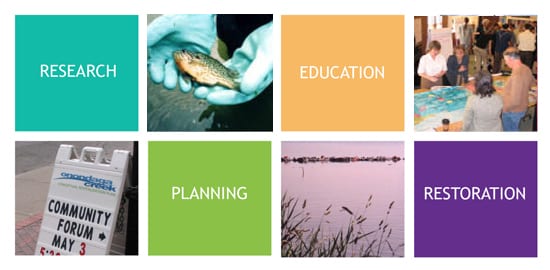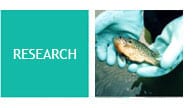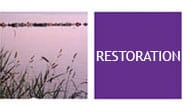Mission
 The mission of the Onondaga Environmental Institute (OEI) is to advance environmental research, education, planning and restoration in Central New York. OEI seeks responsible stewardship of the local environs as a means to achieving the overall goal of sustainability.
The mission of the Onondaga Environmental Institute (OEI) is to advance environmental research, education, planning and restoration in Central New York. OEI seeks responsible stewardship of the local environs as a means to achieving the overall goal of sustainability.
Philosophy: OEI recognizes that human life and ecological systems are inter-related and have intrinsic value; that ecosystem preservation is a moral imperative and collective responsibility, which depends on sound knowledge and conscientious dissemination and application of that knowledge.
OEI conducts research to progress the understanding of ecosystems, human interactions with the environment and the effects thereupon.
 Research: The OEI will lead and support research with application to its mission and of value to the public, governments, natural resource management and regulatory agencies, business, and industry. The OEI will engage the academic and scientific communities through collaborative, interdisciplinary investigations involving a wide array of subject areas. In particular, studies that monitor biota, soil, water, and air quality, or assess the fate and effects of biological, chemical or physical agents, stressors or ecological entities causing environmental perturbation will be used to evaluate implications, efficacy or risks associated with past, present or future anthropogenic activity. Research protocols and experimental designs must be technically sound, utilize current and traditional knowledge, and state-of-art technologies, follow professionally accepted practices or the scientific method, and provide data that are appropriate for evaluating the prescribed hypothesis. The OEI encourages publication of OEI funded research in the peer reviewed literature.
Research: The OEI will lead and support research with application to its mission and of value to the public, governments, natural resource management and regulatory agencies, business, and industry. The OEI will engage the academic and scientific communities through collaborative, interdisciplinary investigations involving a wide array of subject areas. In particular, studies that monitor biota, soil, water, and air quality, or assess the fate and effects of biological, chemical or physical agents, stressors or ecological entities causing environmental perturbation will be used to evaluate implications, efficacy or risks associated with past, present or future anthropogenic activity. Research protocols and experimental designs must be technically sound, utilize current and traditional knowledge, and state-of-art technologies, follow professionally accepted practices or the scientific method, and provide data that are appropriate for evaluating the prescribed hypothesis. The OEI encourages publication of OEI funded research in the peer reviewed literature.
OEI performs outreach and education to develop an informed public, promote environmental ethics and build an environmentally conscious citizenry.
 Education: The OEI will foster and conduct formal and non-formal public education and outreach via industry, business, professional societies, academic institutions, public and private schools, environmental organizations, recreational, sporting, neighborhood and citizens groups, electronic and print media, and the internet. Public education and outreach may be performed independently or as collaborative efforts using a variety of partners, methodologies, and technologies. Formal education may involve school programs, curriculum and lesson development for teachers and students. Workshops and in-service training seminars may be used to promote web-based, classroom, and outdoor nature education. Indoor and field experiences will be implemented through various grants and other sponsored initiatives. The OEI may produce or supplement activities and events with a diverse array of off-the-shelf or in-house products and materials, including web-pages, audio-visual presentations, kiosk or panel, book or booklet, poster, and pamphlet or brochure. The OEI will maintain a corporate website that posts and updates OEI projects and activities. The public may also be informed by public service announcement or news release to local television, radio and newspapers.
Education: The OEI will foster and conduct formal and non-formal public education and outreach via industry, business, professional societies, academic institutions, public and private schools, environmental organizations, recreational, sporting, neighborhood and citizens groups, electronic and print media, and the internet. Public education and outreach may be performed independently or as collaborative efforts using a variety of partners, methodologies, and technologies. Formal education may involve school programs, curriculum and lesson development for teachers and students. Workshops and in-service training seminars may be used to promote web-based, classroom, and outdoor nature education. Indoor and field experiences will be implemented through various grants and other sponsored initiatives. The OEI may produce or supplement activities and events with a diverse array of off-the-shelf or in-house products and materials, including web-pages, audio-visual presentations, kiosk or panel, book or booklet, poster, and pamphlet or brochure. The OEI will maintain a corporate website that posts and updates OEI projects and activities. The public may also be informed by public service announcement or news release to local television, radio and newspapers.
OEI engages in proper planning to empower the public, community stakeholders, and interested parties to participate in decision-making processes.
 Planning: A role of the OEI in environmental planning is to enhance public involvement at the municipal level and watershed scale. The OEI develops and implements public participation programs in resource management, regulatory agency and government planning; brokers public input into decision-making processes; and works to redress environmental justice issues borne by groups such as the poor, laborers, racial minorities, women, children, or indigenous people. The OEI serves as communication liaison between traditional institutions of power and authority and grassroots organizations including the disenfranchised and underprivileged. The OEI functions as a catalyst for community action that plans and builds towards social equity and economic and ecologic sustainability.
Planning: A role of the OEI in environmental planning is to enhance public involvement at the municipal level and watershed scale. The OEI develops and implements public participation programs in resource management, regulatory agency and government planning; brokers public input into decision-making processes; and works to redress environmental justice issues borne by groups such as the poor, laborers, racial minorities, women, children, or indigenous people. The OEI serves as communication liaison between traditional institutions of power and authority and grassroots organizations including the disenfranchised and underprivileged. The OEI functions as a catalyst for community action that plans and builds towards social equity and economic and ecologic sustainability.
OEI works for ecological restoration to improve economic, social and environmental conditions.
 Restoration: The OEI is dedicated to ecosystem protection and preservation, decentralized systems and alternate energy sources, and a sustainable human society. The OEI administers and participates in projects pertaining to habitat enhancement or restoration, oftentimes through point or non-point source (NPS) pollution prevention, reduction, or control. Point source projects mitigate or eliminate effects of effluent discharge, fugitive emission, or leachate as a result of industrial, transit, municipal, and/or residential release. NPS pollution control projects are designed to reduce storm water runoff, sediment, nutrient, fertilizer, pesticide, and other contaminant loads from diffuse rural, urban and industrial origins. Habitat restoration projects are predicated on restoring the ecological integrity of waterways and surrounding lands through re-establishment of contiguous bio-geographical habitat corridors for indigenous aquatic and terrestrial organisms. The reintroduction of native fish and wildlife is a priority of OEI.
Restoration: The OEI is dedicated to ecosystem protection and preservation, decentralized systems and alternate energy sources, and a sustainable human society. The OEI administers and participates in projects pertaining to habitat enhancement or restoration, oftentimes through point or non-point source (NPS) pollution prevention, reduction, or control. Point source projects mitigate or eliminate effects of effluent discharge, fugitive emission, or leachate as a result of industrial, transit, municipal, and/or residential release. NPS pollution control projects are designed to reduce storm water runoff, sediment, nutrient, fertilizer, pesticide, and other contaminant loads from diffuse rural, urban and industrial origins. Habitat restoration projects are predicated on restoring the ecological integrity of waterways and surrounding lands through re-establishment of contiguous bio-geographical habitat corridors for indigenous aquatic and terrestrial organisms. The reintroduction of native fish and wildlife is a priority of OEI.
